Navigating Industry: A Comprehensive Guide to Caster Wheels
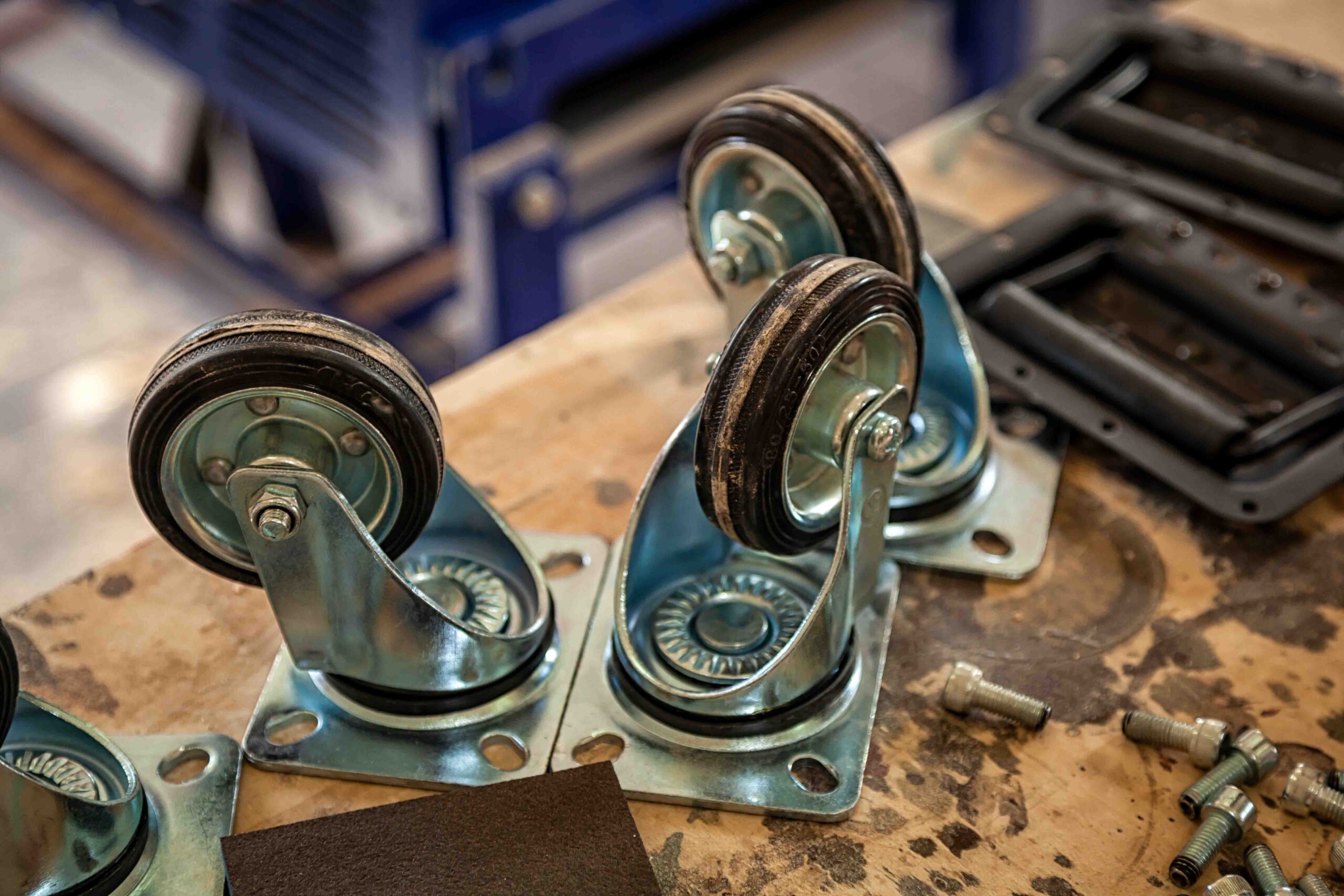
In the vast landscape of industries, the unsung heroes known as caster wheels play a pivotal role in ensuring smooth mobility and efficient operations. From heavy-duty manufacturing plants to hospitals and shopping carts, caster wheels are ubiquitous, offering versatility and ease of movement.
This blog explores the importance of caster wheels in various industries and provides an overview of the different types available.
Importance of Caster Wheels in Various Industries
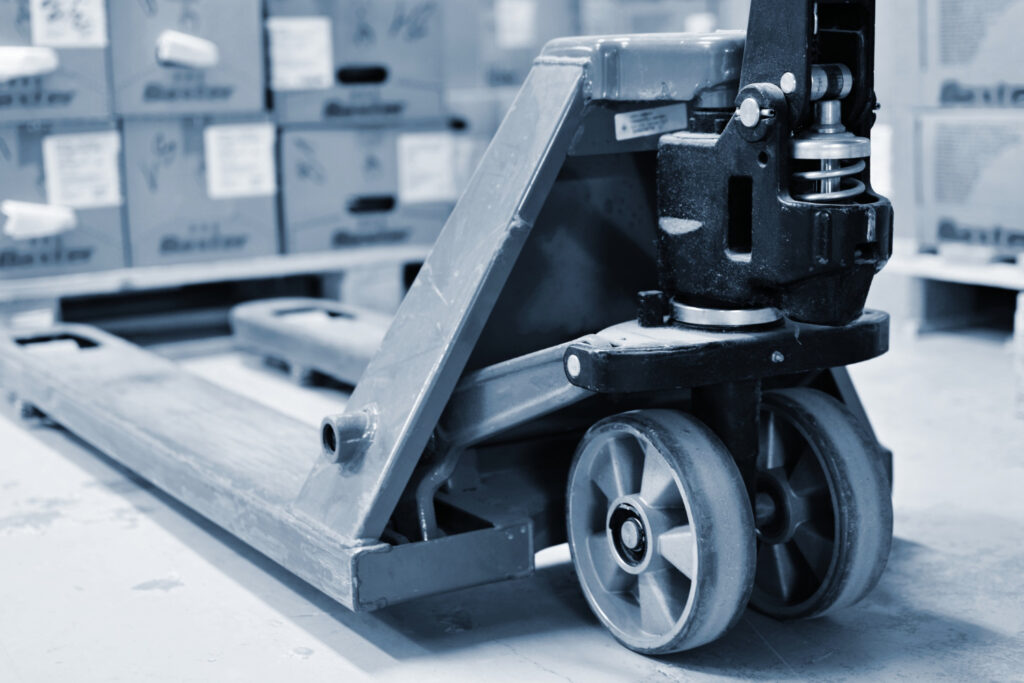
Caster wheels are the silent workforce behind the scenes, facilitating the movement of countless objects and equipment in various industries. Their significance lies in their ability to enhance maneuverability, improve efficiency, and reduce manual effort.
Industries such as manufacturing, healthcare, logistics, and retail heavily rely on caster wheels to streamline operations and optimize workspace functionality.
Overview of Different Types of Caster Wheels
The world of caster wheels is diverse, with each type designed to meet specific needs. Whether it’s the robustness of steel casters or the agility of swivel casters, understanding the distinctions is crucial for selecting the right caster for the job.
This blog will delve into various caster types, including steel casters, caster molds, cast iron casters, machinery casters, heavy-duty casters, and swivel casters.
Steel Casters
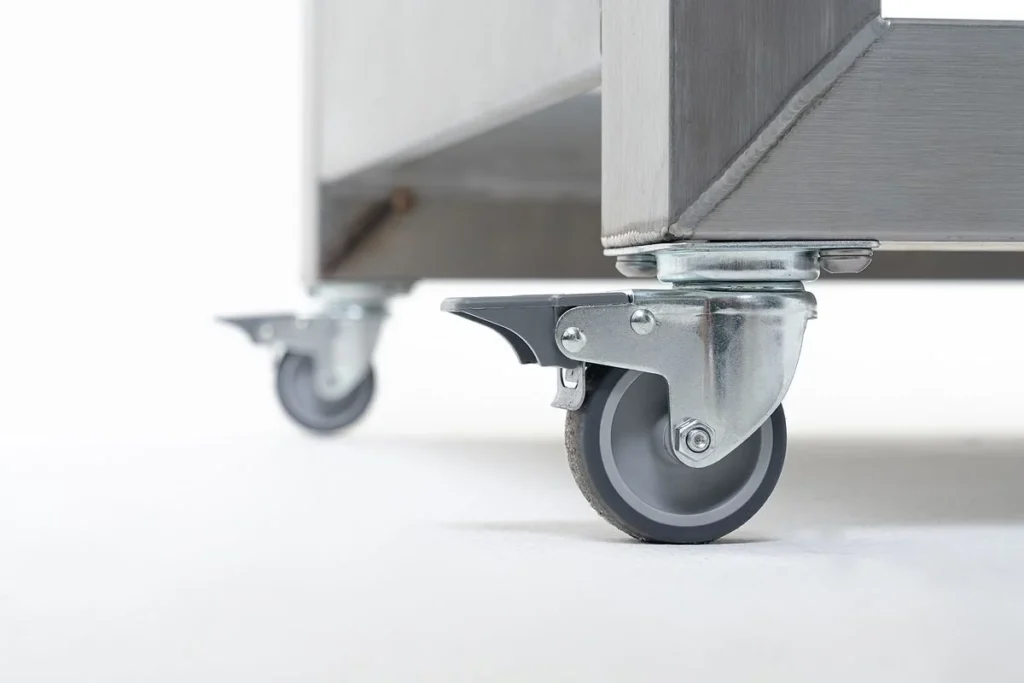
Features and Characteristics of Steel Casters
Steel casters are stalwarts in the caster family, known for their durability and strength. Composed of tough steel alloys, these casters exhibit exceptional load-bearing capacities.
They often feature precision ball bearings, ensuring smooth and controlled movement. The robust construction of steel casters makes them a go-to choice for heavy-duty applications.
Applications in Heavy-Duty Industrial Settings
Steel casters find their home in the demanding environments of heavy-duty industries. Manufacturing plants, construction sites, and warehouses benefit from the ruggedness of steel casters, providing reliable support for transporting heavy loads.
Their ability to withstand harsh conditions and resist wear and tear makes them indispensable in settings where durability is paramount.
Benefits of Using Steel Casters
The advantages of opting for steel casters are manifold. Beyond their load-bearing capabilities, steel casters offer excellent resistance to corrosion and abrasion.
This longevity translates to a lower need for replacements, reducing downtime and maintenance costs. Additionally, steel casters provide stability and precision, crucial for applications requiring meticulous control over movement.
Caster Mold
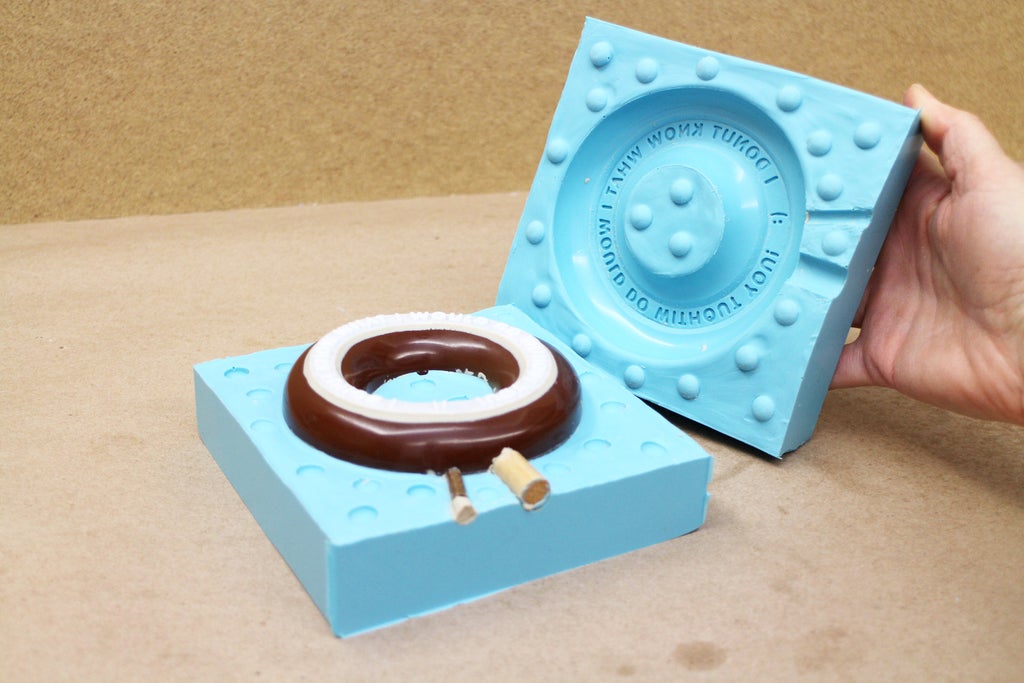
Definition and Function of a Caster Mold
While caster wheels take the spotlight, caster molds silently contribute to their production. A caster mold is a crucial component in the manufacturing process, shaping caster wheels into their final form.
These molds are precision-engineered to ensure the uniformity and quality of caster wheels.
Types of Caster Molds Available in the Market
The market offers a variety of caster molds, each designed for specific caster types and applications. From injection molds for plastic casters to intricate molds for steel and iron casters, the diversity caters to the expansive needs of different industries.
The choice of caster mold influences the final product’s characteristics, including its load-bearing capacity and durability.
Advantages of Using a Caster Mold in the Manufacturing Process
The utilization of caster molds streamlines the manufacturing process, ensuring consistency in production. The precision and repeatability afforded by molds result in caster wheels with uniform dimensions and performance.
This not only enhances the quality of the final product but also contributes to the efficiency of the manufacturing workflow.
Cast Iron Casters
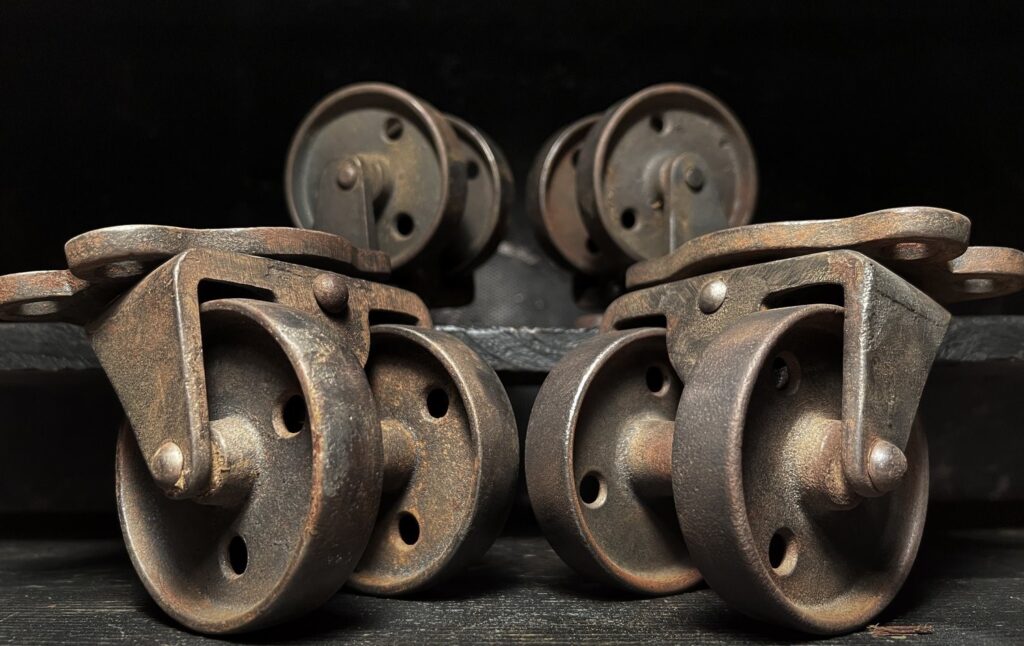
Understanding the Composition and Properties of Cast Iron Casters
Cast iron casters, characterized by their sturdiness and resilience, are crafted from a blend of iron, carbon, and silicon. This composition grants them exceptional strength and durability, making them ideal for environments with high load capacities and rugged conditions.
Applications in Rugged Environments and High Load Capacities
Industries dealing with heavy machinery, such as foundries and construction sites, turn to cast iron casters for their ability to withstand intense loads and harsh conditions. Their robust build ensures stability and longevity, even in environments where other caster types may falter.
Key Advantages and Drawbacks of Cast Iron Casters
The advantages of cast iron casters include their unmatched strength, resistance to wear, and ability to handle substantial loads. However, their weight and potential for corrosion are considerations that need to be weighed against their benefits.
Understanding these aspects helps industries make informed decisions about whether cast iron casters are the right fit for their applications.
Machinery Casters

Exploring the Specific Requirements for Machinery Casters
Machinery casters play a vital role in industries where the movement of heavy equipment is a daily necessity. These casters must meet specific requirements, including load-bearing capacity, shock absorption, and precision in movement. Understanding these requirements is crucial for selecting the right machinery casters for the job.
Industrial Sectors Where Machinery Casters Are Commonly Used
From manufacturing plants with large machinery to automotive assembly lines, the applications of machinery casters span a wide range of industries. These casters contribute to the efficiency of production processes by facilitating the smooth and controlled movement of heavy machinery.
Factors to Consider While Selecting Machinery Casters
Selecting the right machinery casters involves a consideration of factors such as load capacity, floor conditions, and maneuverability requirements.
The wrong choice can lead to operational inefficiencies and increased wear and tear. This section will guide readers through the essential considerations for making informed decisions when choosing machinery casters.
Heavy Duty Casters
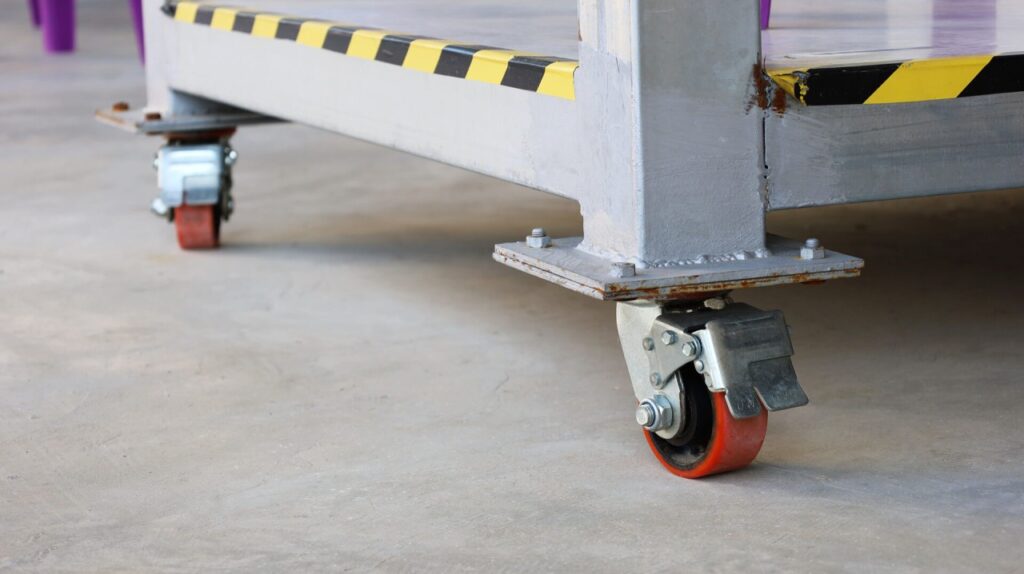
Definition and Characteristics of Heavy-Duty Casters
As the name suggests, heavy-duty casters are designed to tackle the toughest challenges. These casters are characterized by their ability to handle substantial loads while maintaining smooth and controlled movement.
Understanding their specific features is essential for industries that demand reliability and durability in their caster solutions.
Industries and Applications That Demand Heavy-Duty Casters
From aerospace manufacturing to the transportation of sensitive equipment, heavy-duty casters find applications in diverse industries. The ability to carry immense loads without compromising on maneuverability makes them indispensable in settings where precision and reliability are paramount.
Key Features and Benefits of Heavy-Duty Casters
The key features of heavy-duty casters, including robust construction, precision bearings, and specialized materials, contribute to their superior performance.
Exploring these features will provide readers with insights into why heavy-duty casters are the preferred choice in industries where durability and reliability are non-negotiable.
Swivel Casters
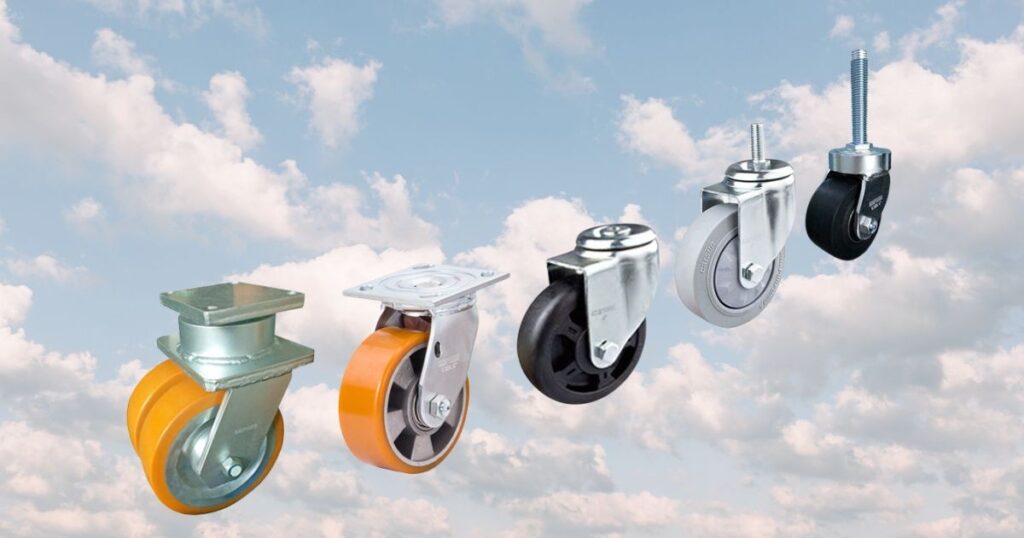
Understanding the Functionality and Design of Swivel Casters
Swivel casters introduce a dynamic element to the world of caster wheels. Unlike fixed casters, swivel casters pivot on a vertical axis, allowing for multidirectional movement.
This unique design enhances maneuverability and flexibility, making swivel casters suitable for applications that require agile and responsive mobility.
Applications Where Swivel Casters Excel
Swivel casters shine in environments where quick and precise maneuvering is essential. Industries such as healthcare, hospitality, and retail benefit from the agility of swivel casters, enabling equipment and carts to navigate tight spaces with ease. Understanding the specific applications where swivel casters excel is crucial for making informed choices.
Advantages and Considerations While Using Swivel Casters
Swivel casters introduce a dynamic element to the world of caster wheels, offering unique advantages and considerations that cater to specific applications. Understanding these factors is crucial for making informed decisions when integrating swivel casters into various industrial settings.
Conclusion

In the intricate dance of industries, caster wheels emerge as unsung heroes, silently supporting the movement of equipment and materials. Their importance reverberates across diverse sectors, enhancing efficiency, reducing manual effort, and optimizing workspace functionality.
From the rugged reliability of steel casters to the agility of swivel casters, each type plays a unique role in shaping the landscape of mobility within industries.




